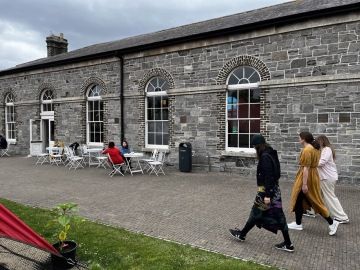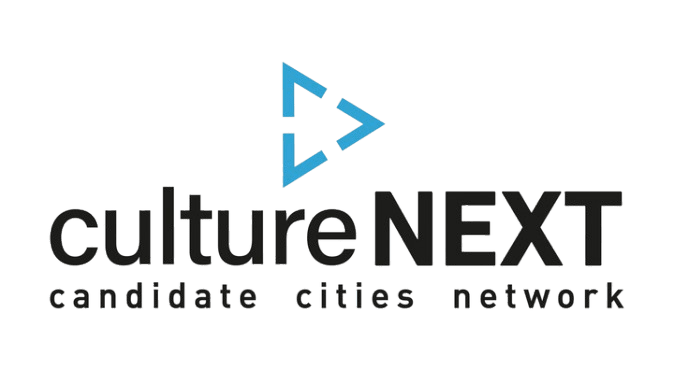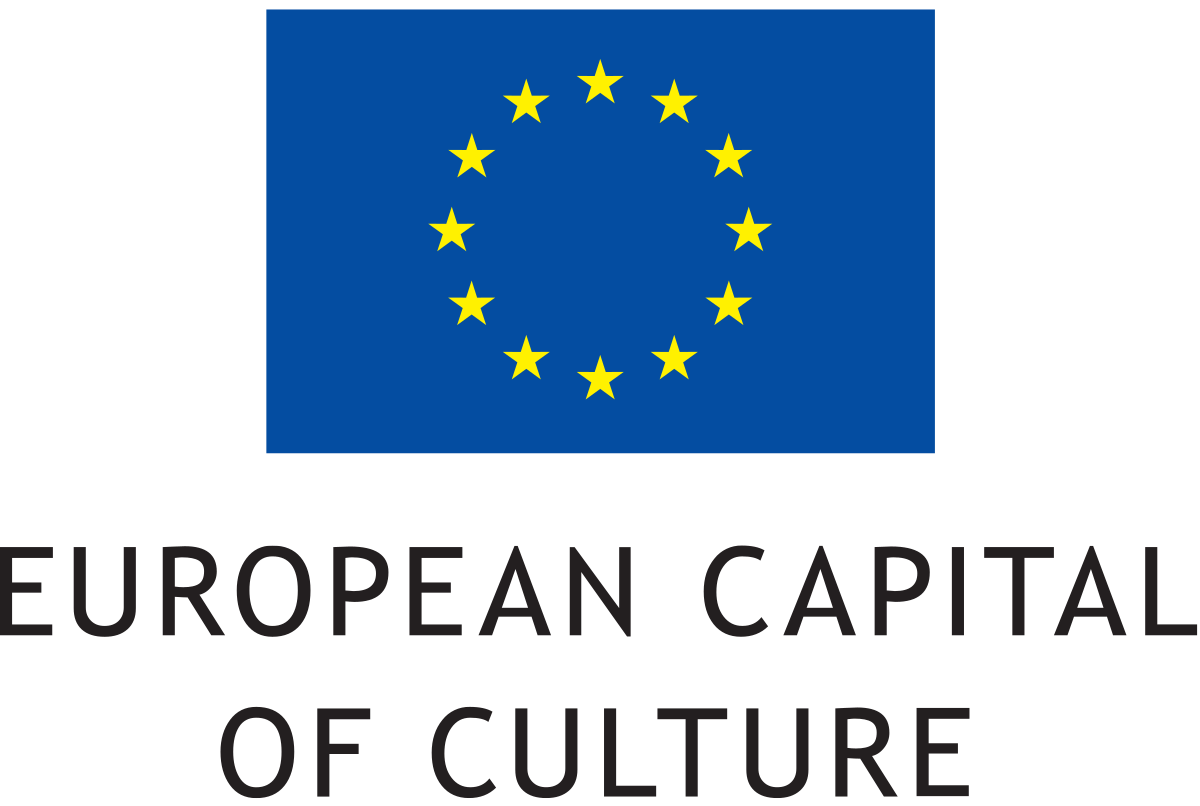Culture Next Mobilities: Budějovice in Dublin, Summer 2024
In July of this year, as part of the preparations for the European Capital of Culture 2028, we traveled from České Budějovice to Dublin for inspiration.
It was part of a new program within the network of candidate cities for the title of European Capital of Culture – Culture Next. We could choose a theme that is most relevant to us during our preparation phase and embark on a week-long mobility to a city that has valuable insights to share on that topic. One of the long-term challenges that interests us is how to make culture more accessible to everyone in the city. The European Capital of Culture is expected to bring new artistic experiences to the South Bohemian Region—how can we offer these experiences to the widest possible audience? And how can this support long-term attendance and engagement in culture?
We were invited to this mobility by the Irish organization Dublin City Council Culture Company. In their activities, we saw a model for many planned projects and found their approach aligned with the values of our candidacy and (PERMA)CULTURE, which is centered on people and sustainable cultural development. We were excited to learn about their methods. In addition, we received the opportunity to gain insights into the organization and its strategic management.
The program was structured from Monday to Friday to ensure that we got to know the team and their programs, some of which we experienced firsthand.
MONDAY
We started our Monday at one of the buildings operated by the organization, 14 Henrietta Street, which also houses most of the team. During the introductory meetings, we learned about how the entire organization was founded and how it operates. It all began with Dublin's candidacy for the European Capital of Culture in 2020. The team behind it placed a strong emphasis on public participation and engagement—on real needs, collaborative project development, and learning. The main goal was to connect the residents of Dublin through culture—across the entire city. Although the team did not win the title, they decided to continue testing some programs from the candidacy in collaboration with the city. These initiatives became so popular among residents that in 2018, the city established the Dublin City Council Culture Company (DCCC), under which their activities continue to develop strategically.
Even though České Budějovice is in a completely different situation, preparing for major cultural events in 2028, we gained inspiration on how to lay a strong foundation for meaningful programs created together with the locals that will bring joy even after the title year. DCCC has a well-developed system for engaging the public in culture, around which the entire organization operates.
We spent the week mapping out exactly how they do this, but we grasped the foundations right away on Monday afternoon when we met with two enthusiastic teams: Engagement and Creative Engagement. They collaborate closely year-round, with their work based on meetings, conversations, and collecting stories from communities throughout the city—this is the main task of the Engagement team. One example of their work is the program "Tea and Chats." Through this initiative, the team has gathered stories and interests from a variety of Dublin residents and maintains ongoing contact with them. These relationships further develop through involvement in cultural and artistic programs managed by the Creative Engagement team. Based on our experiences from the Kul.turista project, we reflected on the importance of having programs and sections interconnected, actively gathering information from people, and primarily recording it for future use to build programs—with people and for people. DCCC provided us with an excellent practical example of how to use a CRM system as a database, where all information and carefully prepared reports are readily available.
TUESDAY
On the second day, we began at another building, Richmond Barracks, a former barracks that DCCC transformed into a cultural and community space with a beautiful garden. Here, we witnessed how important it is for the organization to have its own space. Visitors to the programs have the opportunity to meet one another, learn about upcoming events and happenings in the neighborhood, borrow reading materials from the local library branch, or simply stop by for coffee. Every Friday, they can enjoy meals at the fantastic Food Cloud canteen, which cooks with surplus groceries from supermarkets. More importantly, this space allows the entire organization’s team to regularly meet with all communities and the public, gather live feedback, and stay actively connected with people and current events.
The main program at Richmond Barracks is called Culture Connects, aimed at offering people the chance to engage actively through various artistic activities in collaboration with specific artists and creatives. This program is managed by the Creative Engagement team, which oversees other initiatives, whether inside the buildings or outside. The principle behind all programs is to connect the public with artists or cultural organizations.
During our meetings and later in the week, we became familiar with the methodology and outputs of their programs, such as National Neighbourhood, Historian in Residence, and Creative Residencies.
In the afternoon, we experienced another program under the Engagement department—Culture Club at the Irish National Theatre, the Abbey Theatre. This initiative gives the public the chance to explore various cultural organizations regularly. It is primarily designed for new audiences who might otherwise hesitate to visit or not even think of doing so. At each event, a member of the organization’s team guides visitors and provides insight into its operations. We believe the Culture Club is popular because it facilitates socializing—many people report that they "don't have anyone to go to cultural events with," which discourages them from attending. Thus, it serves as an excellent tool to overcome this barrier. However, as the team noted, some participants have grown so fond of the club that even long-time culture enthusiasts sign up for events aimed at complete newcomers and become regular attendees.
WEDNESDAY
On Wednesday, we had the opportunity to experience two more programs organized by DCCC. We began with a tour of 14 Henrietta Street, a museum built on stories collected from former residents of the house where it is located. The museum showcases videos, photographs, audio recordings, and only a minimal number of collection items. The personal stories told by our guide unfolded the narrative of Dublin and Ireland over the past 300 years. The tours of the house are popular among locals and tourists alike—we were moved and especially excited about the principle on which the museum operates and how it engages with a still considerable number of people who lived in similar conditions in Dublin's past. The tours are continually updated with new stories from people who visit the house, thereby keeping history alive for future generations.
Later, we returned to Richmond Barracks to participate in the first meeting of a citizens’ advisory group, open to anyone in Dublin. Fifty people from various professions gathered, ready to volunteer their expertise or represent their communities over the next two years to make Dublin a better place to live through cultural development. It was inspiring for us to see so many engaged residents who genuinely care about their city.
THURSDAY
On Thursday, we began with a meeting about the “Culture Near You” project, which serves as a cultural map of Dublin, allowing residents to explore the types of activities taking place in different neighborhoods of the city. In practice, this is a data platform that aggregates information about the cultural infrastructure, utilized not only by DCCC but also by the city council for cultural planning. The platform both brings culture closer to people in specific neighborhoods and serves as an analytical tool for identifying so-called hotspots (areas with a high concentration of cultural activities) and blind spots (areas with a low concentration of cultural activities) in Dublin's cultural landscape. Rather than functioning as a cultural calendar, it provides an overview of available venues and regular activities in which residents can engage. Notably, the cultural offerings also include public spaces, sports facilities, schools, and community centers—together creating an environment conducive to cultural living for all in Dublin.
In the afternoon, we attended a meeting focused on accessibility with the Head of the Operations Department. Throughout the week, with over 20 meetings and events, we realized that emphasizing accessibility (barrier-free access) is absolutely fundamental for the entire team. They have integrated this principle from the beginning into everything they do, including the buildings they manage, through the concepts of universal design. Moreover, prioritizing accessibility is as natural for the organization as ensuring proper heating and lighting in the offices or correctly managing invoice circulation. The primary goal is to ensure equal access for everyone to all activities they offer, whether aimed at the general public, cultural organizations, or public administration.
FRIDAY and conclusion
On Friday, we had our final meetings. At Richmond Barracks, we met with the head of the new Culture Spaces department, which was established as more venues come under DCCC's management. This department is responsible for providing these spaces to other organizations and groups and ensuring that events held there are as beneficial as possible for all groups and potential visitors.
Following this, we had a closing meeting with the organization’s leadership, where we could recap and validate everything we had learned throughout the week. We interacted with more than 16 members of the organization—both during meetings and through the programs they led. This experience allowed us to understand how the organization operates and to witness what it means for the entire team to consciously fulfill the mission and vision of the organization through their daily actions.
We gained insight into the tremendous effort everyone invests in each small activity and how everything is built on the long-term relationships they cultivate, emphasizing listening and mutual learning. One year after receiving the title, this mobility served as an ideal space for us to reflect on our experiences and explore what we do from an outside perspective.




Are you interested in learning more about the work of Culture Company?
Visit www.dublincitycouncilculturecompany.ie.
This initiative was made possible with financial support from the European Union. The views expressed here are those of the author and do not represent the official position of the EU.
The mobility project is supported by the Culture Next network, funded by the European Union.



